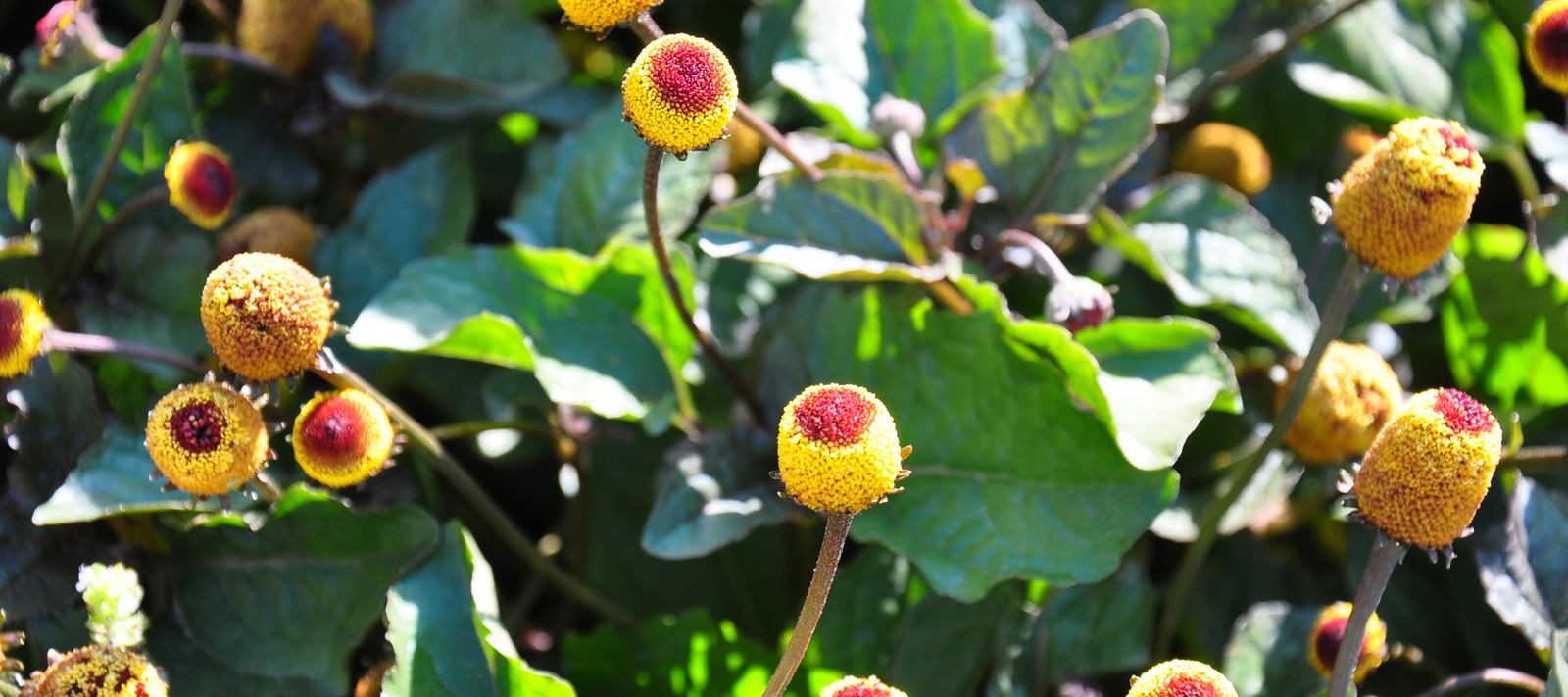With a name like Toothache Plant, one can assume that this plant is useful in helping relieve tooth pain, but Achmella olaracea is a fascinating plant with many uses and a lovely appearance. Let’s explore the uses of this plant and discuss how and why you might want to grow it in your survival garden.
A Plant of Many Names
Like another recently discussed plant, Lunaria, the Toothache Plant can go by many names. Botanically named Acmella oleracea, this flowering plant is native to Brazil and may also be known as electric daisy, jambu, paracress, eyeball plant, Spilanthes acmella, and buzz button. Its flowers are distinctive in that they don’t have ray-like petals and instead appear more like olive-sized orbs that are mostly bright yellow with a red center, making them look like eyeballs. Toothache Plant is a relative of daisies and sunflowers and is usually grown as an annual in the United States, but in warmer zones, they will grow as a perennial.
Natural Pain Relief
For ages, Toothache Plants have been used for natural pain relief, most popularly mouth pain from toothaches due to the anesthetic effect of chewing the leaves. The leaves and flowers of the plant contain a compound called spilanthol that creates a numbing sensation. You can chew the leaves directly or make a tincture with alcohol to more precisely apply the numbing effect where it is needed. The plant also contains compounds called flavonoids that help to reduce the perception of pain.
Achmella oleracea’s anti-inflammatory properties are useful for treating skin inflammation from dermatitis. It is also a natural diuretic and can help the body expel excess water. The entire plant has been used as herbal medicine. The flowers, leaves, and stems are edible and can be used raw, cooked, or dried. The leaves can make a tasty addition to salads and other dishes where they will taste something like hot peppers due to the tingling sensation they create. Always consult a physician before using natural remedies, especially when taking prescribed medications.
How to Grow Toothache Plant

Toothache Plant seeds can be started indoors about 6 weeks before your last frost date, or sown outside after all danger of frost has passed and the soil is warm. Plant seeds about 1/4 inch deep and expect the seeds to germinate in 7 to 14 days. Plants should be spaced 12 to 18 inches apart.
Light Needs
Toothache Plants will grow in partial shade to full sun. If they do not get enough sunlight, they will get “leggy” and stop producing those interesting flowers.
Water and Soil Needs
Since these are tropical plants, buzz buttons prefer a rich organic soil that drains well. They should be kept well-watered but not too wet or it may cause root rot. Feed weekly with a balanced organic fertilizer when the plants are young. When they start to bloom, switch to a fertilizer that is high in phosphorus to encourage blooming throughout the season. Deadhead spent flowers to further encourage the production of new blooms.
Dealing With Pests
Deer and rabbits do not usually bother Toothache Plants beyond nibbling on them occasionally. Typical garden pests like aphids, spider mites, and mealy bugs may attack your electric daisies. Use an organic pesticide like neem oil to deal with stubborn infestations, but avoid any pesticides if you intend to consume the plants. In that case, encouraging natural predators like lady beetles or planting trap plants like nasturtiums or sunflowers nearby might be the best option.
Celebrate the Unusual
If you are looking for something different to plant this year, why not consider the Toothache Plant? They are easy to grow and will look like nothing else in your garden. They come with the added benefit of being a highly useful natural remedy that you can add to your survival apothecary.

























